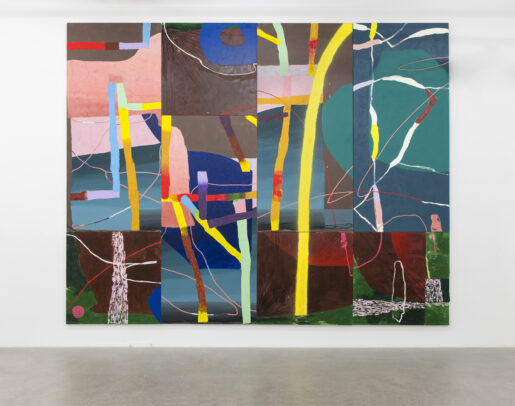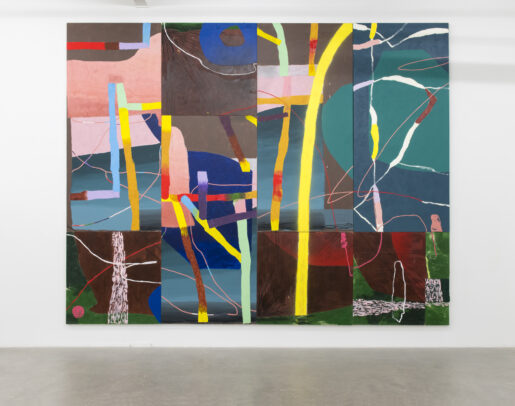Russna Kaur Paints with Radical Openness … And She Wants You to Do the Same
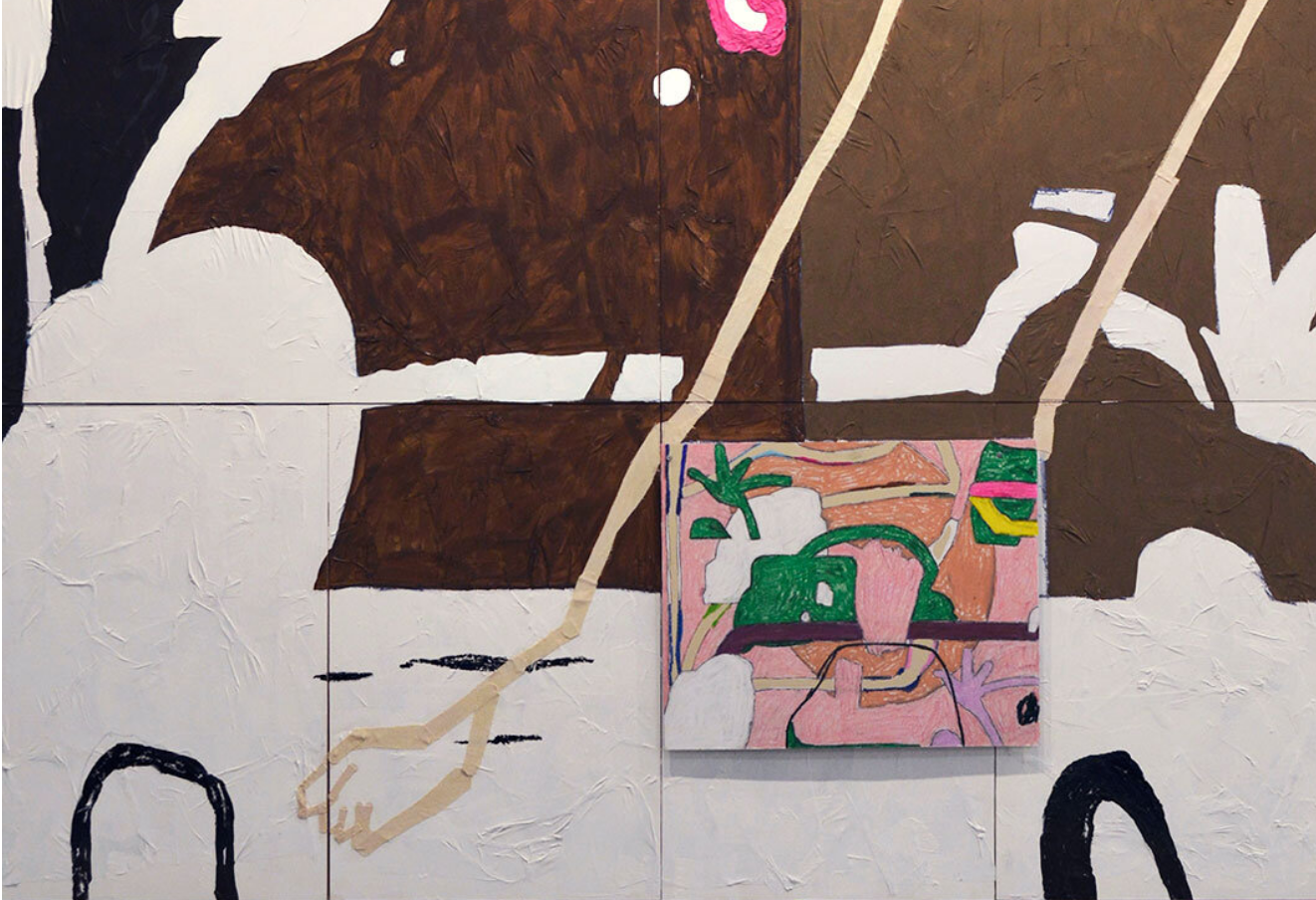
Posted on | Updated
“Our paintings become an extension of ourselves, of our lives,” says the artist and ECU faculty member.
Painting from within self-isolation presents a golden opportunity to peer deeply into one’s surroundings and find new ways of drawing personal narratives into artistic practice, says artist and ECU faculty member Russna Kaur Somal (MFA 2019).
During a series of online-only painting courses taught over the summer, Russna has been encouraging her students to look no further than the place they call ‘home’ for inspiration.
“The thing that makes each student’s work interesting is when they can share a little bit of themselves in their paintings,” she says. “And for me, what better place to do that than your own home? You're surrounded by things that make up who you are. And often I feel like we don't realize it because we're just so used to our surroundings, and we don't really give it a second thought.”
The colours, shapes, objects and spaces that make up a person’s material life are all charged with narrative and symbolic potential, Russna says. Each familiar sight is a “little piece of your story,” she tells her students; the fact that artists of all stripes are experiencing restricted access to the materials and spaces they typically rely on presents an opportunity to reflect on how personal artifacts can be mobilized toward powerful artistic expression.

This isn’t just talk. In recent solo exhibitions including Veil of Tears, at Trapp Projects, and She was there for a while … at the Fort Gallery, Russna’s stunning paintings reveal an artist adamantly committed to experimentation and openness. Single works often include more than a half dozen individual materials, including several different types of paint, marker, pastel, crayon, colored pencil, cut paper or canvas, and even sawdust. Her show at the Fort Gallery, meanwhile, saw her transform the entire exhibition space by painting on the wall, floors and ceiling — gestural marks, colour fields and enormous shapes floated across the three-dimensional space, often interacting with paintings on canvas or panels, hung throughout the gallery.
But an artist needn’t have access to a gallery space to break the mold, she notes.
“Because all of us are now in alternative studio spaces, I really wanted to think about ways that we can incorporate and embrace that, and make it a part of the work,” she says. Her students have been encouraged to raid their pantry or cutlery drawer for new tools and materials to push their practices forward.
“They can look around their home for things that they can mix into their paint, or things that they can use to make marks,” Russna continues. “It's not just about using paint and a paintbrush or a pallet knife. Why can't you use a fork to make a mark? Why can't you use a whisk? Or why can't you paint on an old bed sheet that you have lying around? Why can't you mix sesame seeds into your paint? Or salt or soil or sand?”
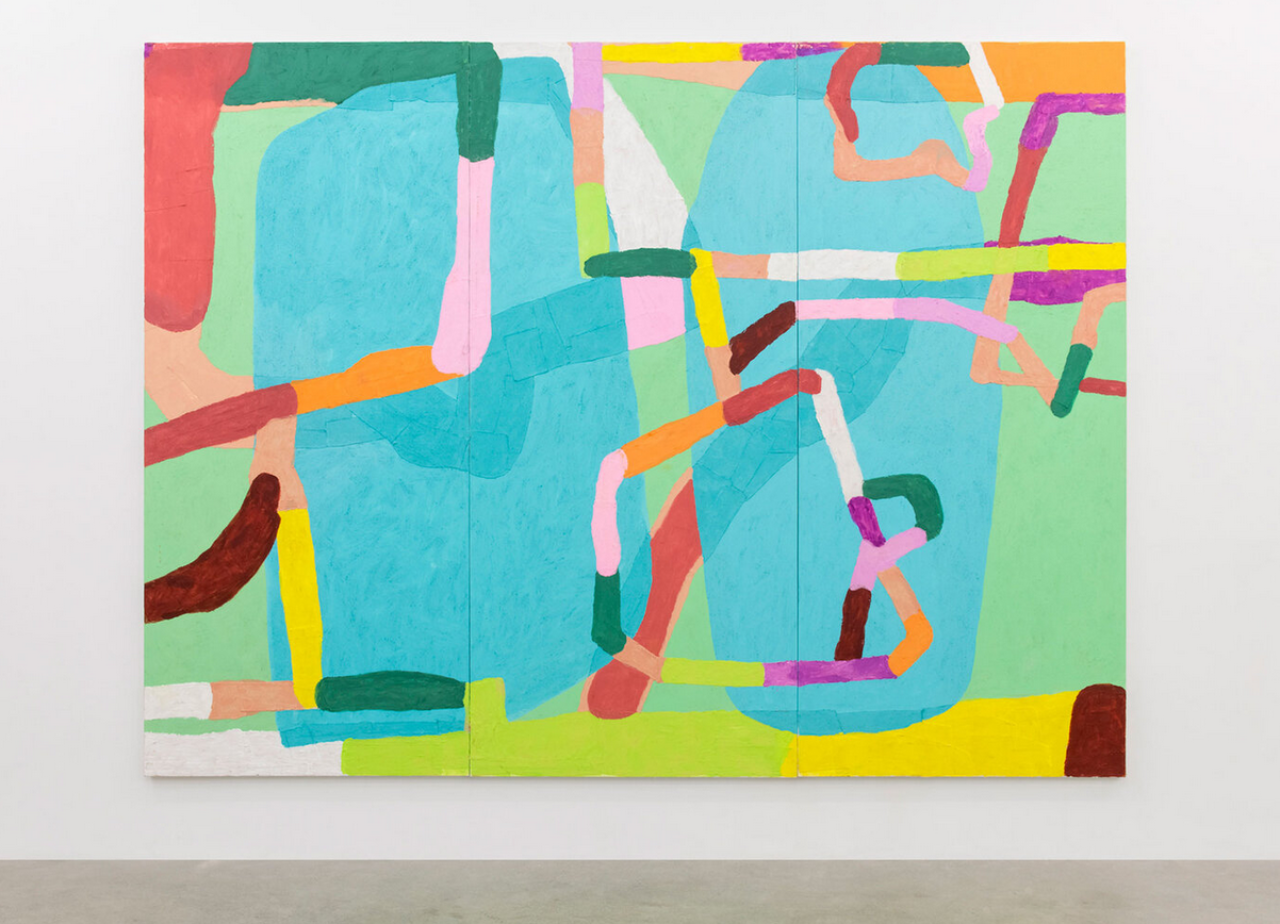
Too often, she says, emerging artists are held back by what they’ve been told is the “correct” way of painting, or of practicing art. But instead of focusing on how they should make a painting, there is far greater value in considering how they can make a painting, she says. A student’s time at Emily Carr should be a time of experimentation, says Russna; the university is “a place to try out processes, make mistakes and discover new approaches to painting, whether or not it becomes a part of their practice.” Encouraging this process of discovery is part of how Russna hopes to help her students develop a more resilient and empowered practice.
This message has resonated with her students. Bijal Patel, who studied painting online under Russna this summer, says Russna’s lessons in resourcefulness were transformative for her practice.
“It’s been fantastic. I've been using everything from old chopping boards to eggshells, to rice and flour; everyday objects that we have on hand at home, which I never thought could be incorporated or used in such interesting ways,” she says, adding she views this discovery as one of the silver linings of self-isolation.
“I think this is a benefit of being online. Maybe one of the gifts of these really crazy times, where we can't have access to the usual studio space and equipment and going to an art supply store, is the realization that actually there's so much potential within our own natural environment. And one of the strengths of Russna’s course is opening my eyes to that.”
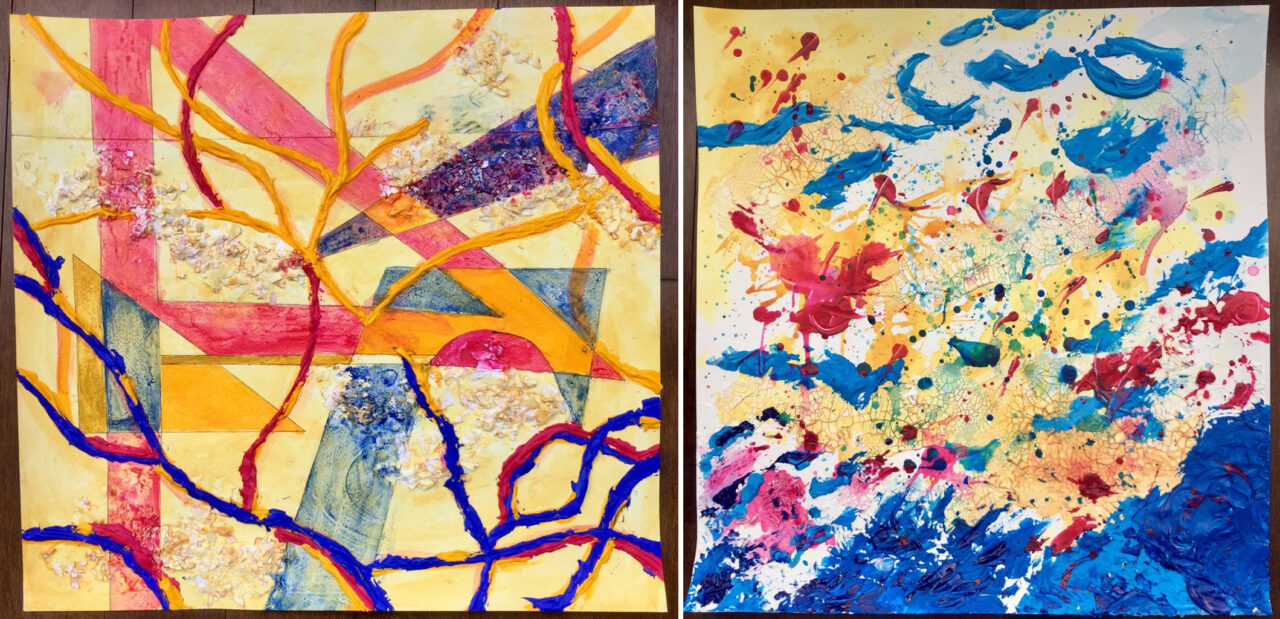
Kismet Lowrie, another of Russna’s students, recounts using tools as diverse as fondue forks, hammers, toothbrushes, thimbles, plastic bags, bark, shingles and sequins to apply paint, make a mark or as materials added to the paint itself.
“It has been amazing!” Kismet says. “I have found a new artistic freedom and confidence in my painting practice. Russna has encouraged our creativity in so many ways.”
Kismet adds that Russna’s course put her in touch with “the pleasure of connecting narrative to a piece of work” — a part of artistic practice Russna sees as an extension of artists engaging in a more thoughtful dialogue with their material practice.
“Our paintings become an extension of ourselves, of our lives,” Russna says. “I’m trying to provide them with tools that they can not only use in class, but outside of class as well to figure out what their narrative is; who are they artists; who are they as people.”
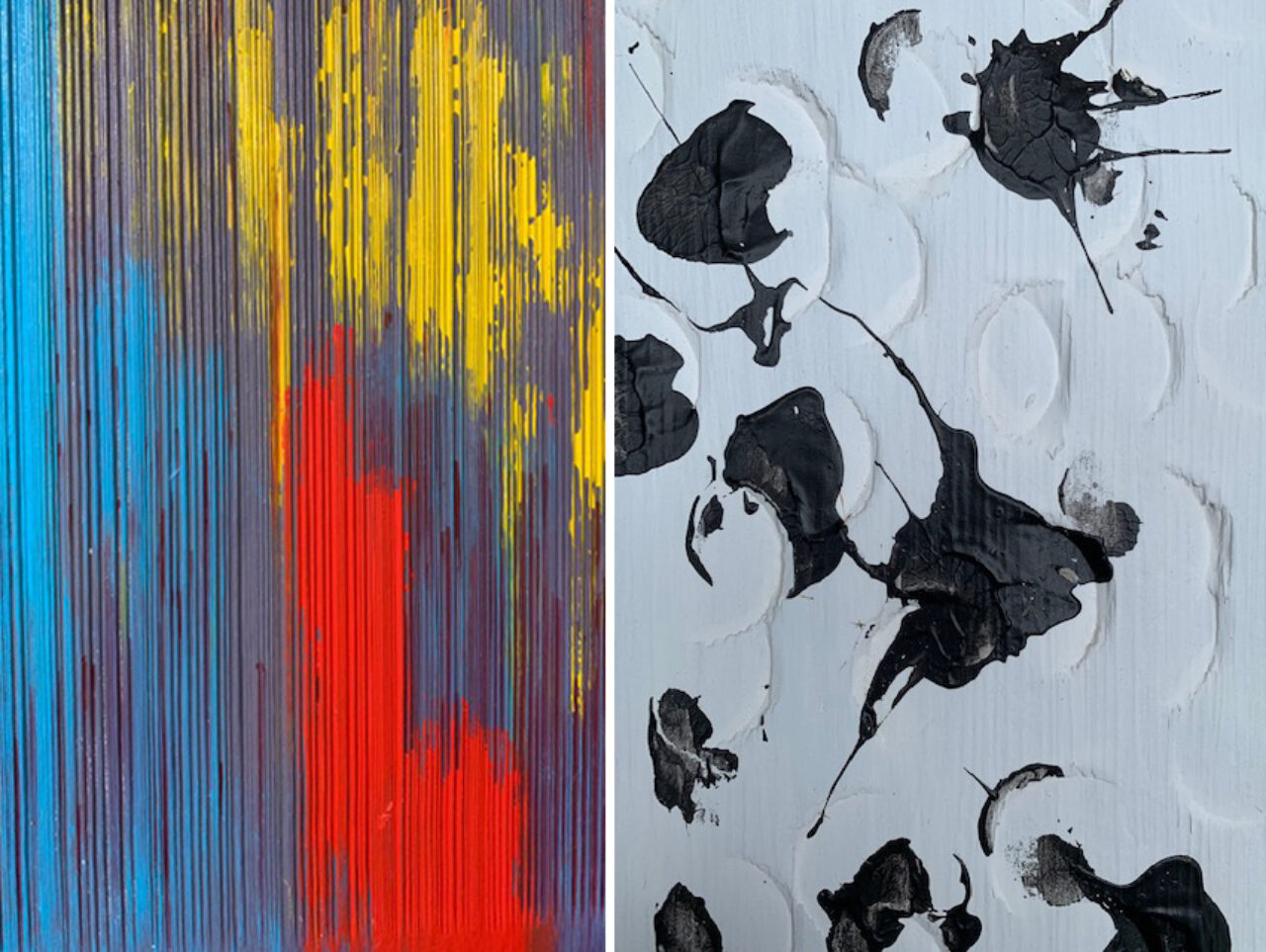
Through that lens, adds Kismet, being stuck inside is anything but an impediment to art-making.
“Wherever we are as painters, we just have to take a look at our current surroundings,” she says. “Evoke all of our senses and really look around our environment for shapes, colours, sounds, objects, words, feelings, memories. Ideas become so abundant. I’ve been filled with inspiration and motivation.”
Bijal likewise sees her time learning online with Russna as a welcome lesson in artistic agency at a moment where uncertainty sometimes feels like the only sure thing.
“We’re being challenged in different ways to think about change and impermanence, about letting things go and going with the flow and seeing what evolves,” she says of her studies. “It’s really exciting to feel empowered during these times, where we could feel limited and constrained and stuck. It has become an experience of empowerment, and there’s real liberation in that.”
